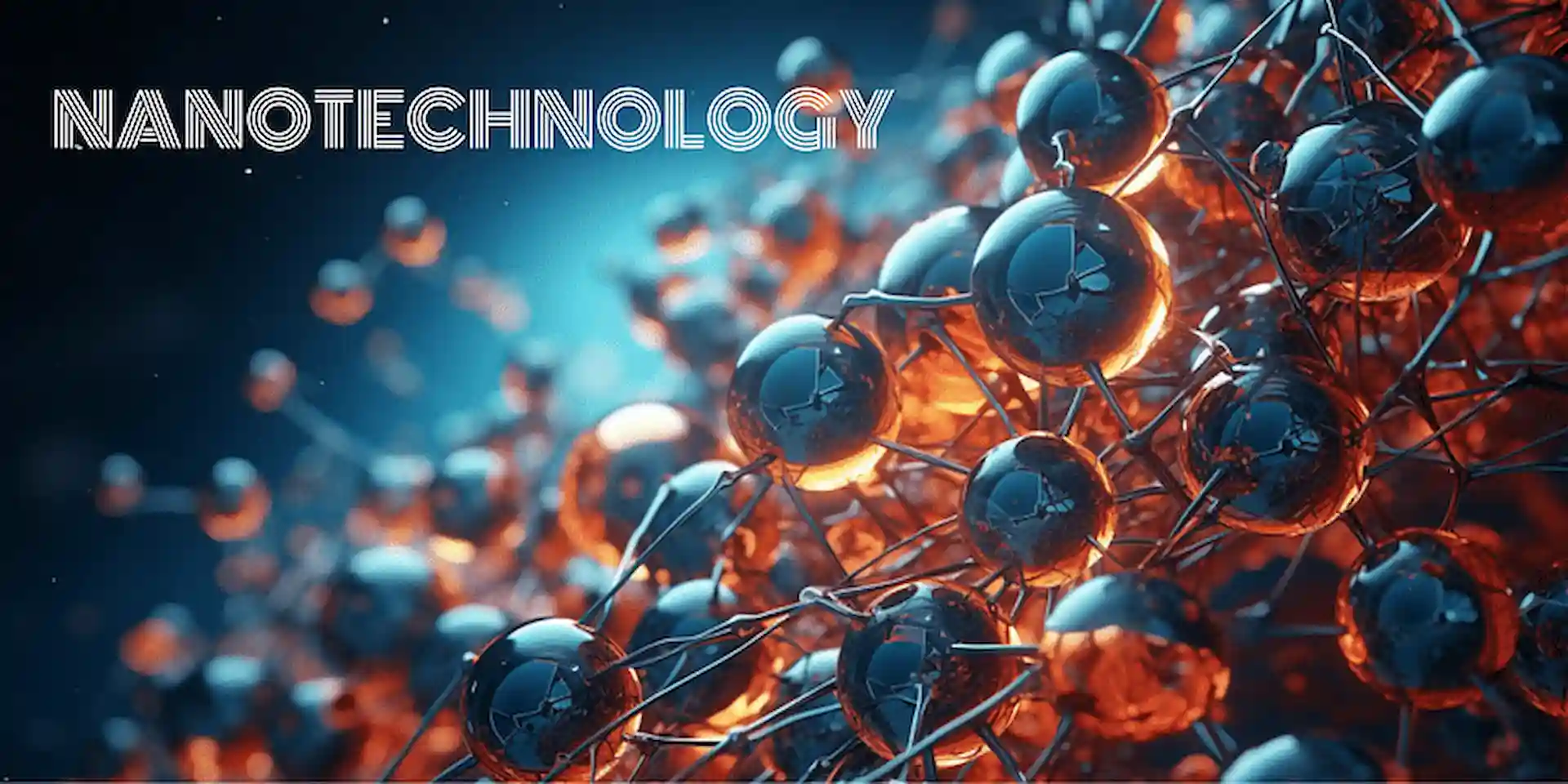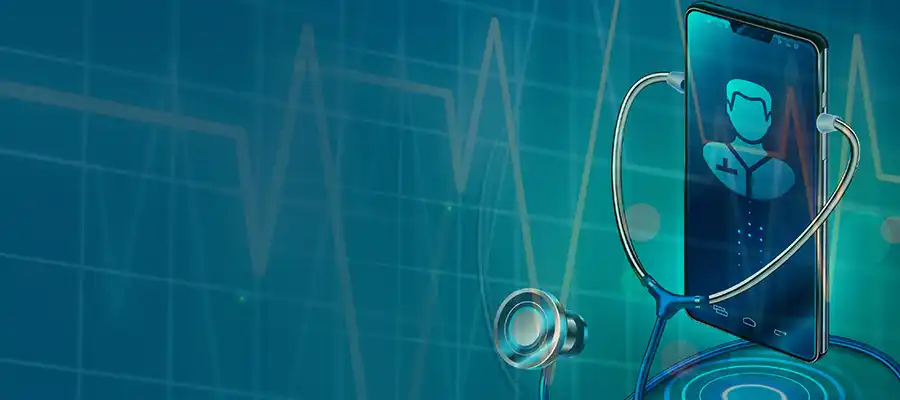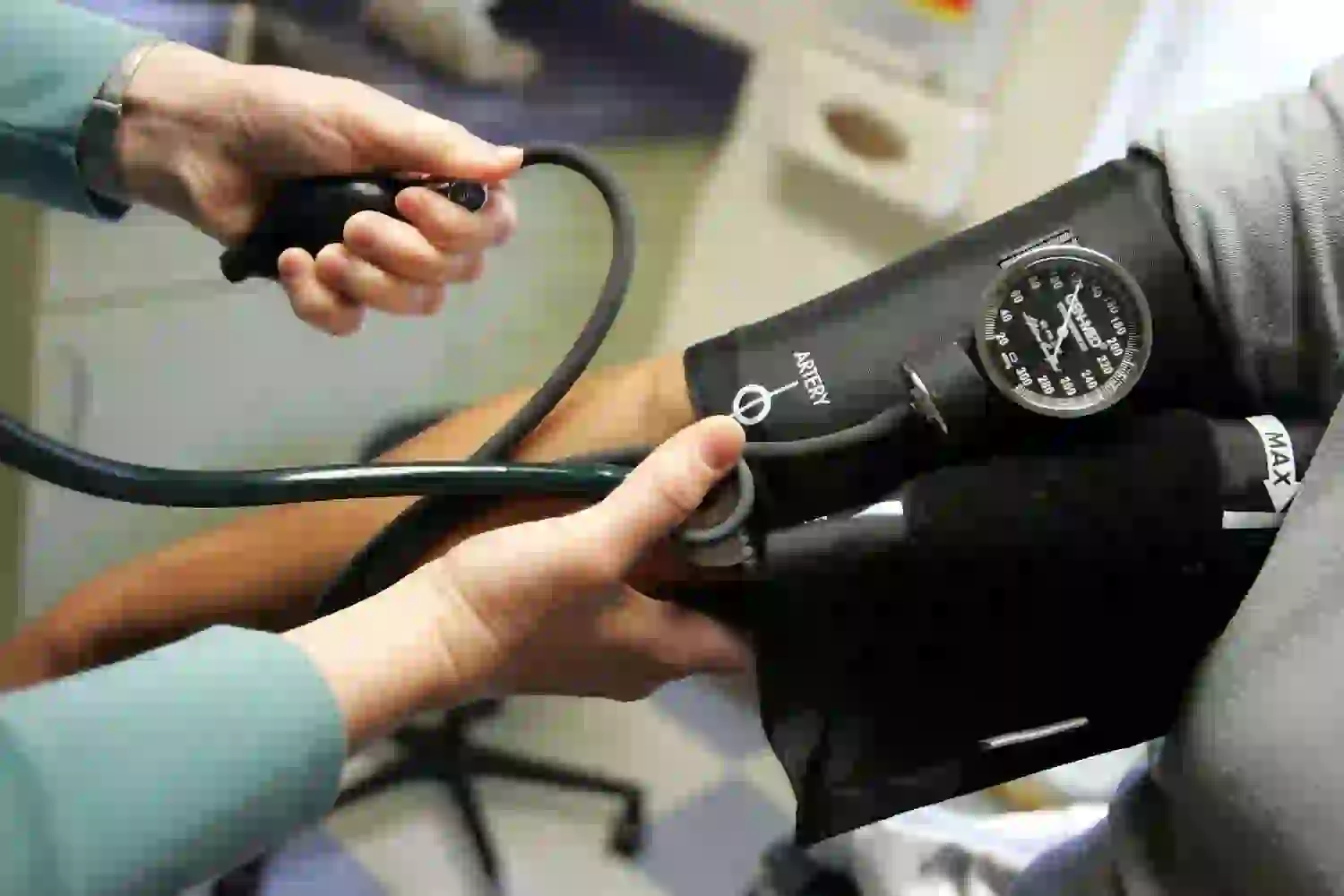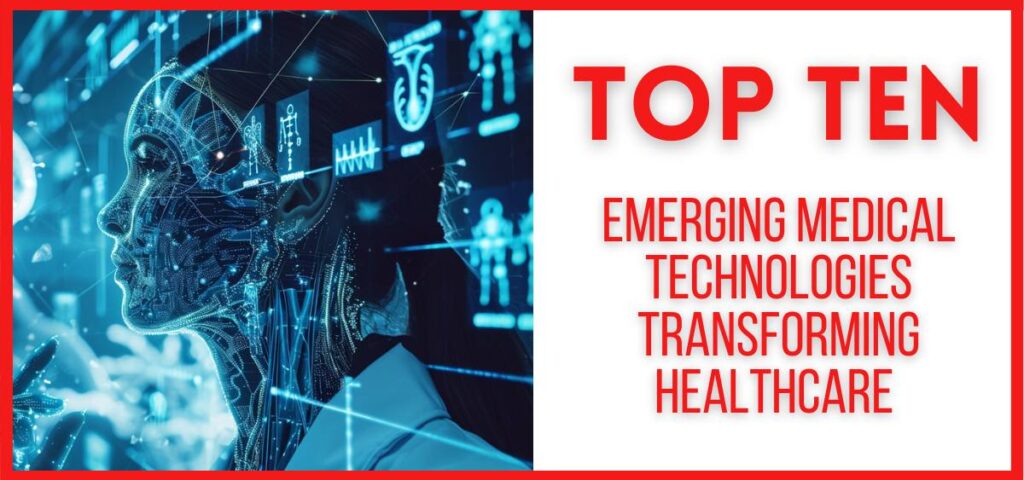The future of healthcare is rapidly evolving with waves of new medical technologies. These advances fundamentally alter the diagnosis, treatment, and management of diseases. From artificial intelligence (AI) that analyzes medical scans with superhuman accuracy to gene-editing therapies that offer the potential to cure once-intractable diseases, the possibilities seem endless.
This blog dives deep into 10 cutting-edge medical technologies transforming healthcare. We’ll explore how these innovations are shaping the future of medicine, focusing on personalized care, improved patient outcomes, and a more proactive approach to health.
Also read! Top Ten Healthiest Fruits
From Sci-Fi to Reality: Top 10 Medical Technologies Transforming Your Health
Remember the medical wonders from your favorite sci-fi movies? Because science fiction is fast becoming science fact. A wave of innovative medical technologies is revolutionizing healthcare, offering glimpses of a future where personalized medicine, preventative care, and breakthrough therapies are the norm.
In this blog, we take an in-depth look at 10 emerging medical technologies that are revolutionizing the way we diagnose, treat, and manage our health. Get ready to explore groundbreaking advancements that were once science fiction! See how these innovations shape a more precise, efficient, and powerful healthcare future.
Unveil the top 10 medical marvels transforming healthcare! Discover how these innovations impact your health and redefine the future of medicine.
Also read! Ten Tips For Eating a Healthy Diet
1. Nanotechnology
Nanotechnology, which manipulates matter at the atomic and molecular level, is making waves in the medical field. Imagine tiny robots, or nanorobots, moving through your bloodstream, delivering drugs directly to diseased cells or repairing damaged tissue from within. This may sound like science fiction, but it is an exciting possibility for nanomedicine.
Nanoparticles also have applications in creating ultra-sensitive biosensors for early disease detection and targeted drug delivery systems that minimize side effects.
 Even in its early stages, nanotechnology is changing medical imaging, with researchers developing nanoparticles that illuminate tumors during scans, leading to more accurate diagnosis and treatment planning. The future of nanomedicine promises entirely new frontiers in personalized therapy and disease management.
Even in its early stages, nanotechnology is changing medical imaging, with researchers developing nanoparticles that illuminate tumors during scans, leading to more accurate diagnosis and treatment planning. The future of nanomedicine promises entirely new frontiers in personalized therapy and disease management.
Also read! Top 10 Verizon 5G MEC Features
2. Health Trackers, Wearables, and Sensors
Gone are the days of relying solely on a doctor’s visit for health insights. Health trackers, wearables, and sensors allow us to take a more proactive approach to our health. From smartwatches to implantable biosensors, these devices continuously monitor various physiological data such as heart rate, sleep patterns, and activity levels.
This real-time information also allows people to spot trends, track progress toward fitness goals, and spot potential health risks early. In addition, wearable sensors are being developed to monitor chronic diseases such as diabetes and heart disease, enabling the adjustment of medications and lifestyle changes based on real-time data.
![]() This continuous health monitoring allows patients and doctors to work together to create personalized treatment plans and improve overall health.
This continuous health monitoring allows patients and doctors to work together to create personalized treatment plans and improve overall health.
Also read! Top 10 Most Searched Pixel 8 Features
3. Global adoption of telemedicine
The advent of telemedicine has revolutionized access to healthcare. Imagine a world where you can see a specialist, get refills, or even take care of minor emergency care needs from your home via video call. Telehealth uses video conferencing technology to connect patients and doctors remotely, eliminating geographic barriers and reducing wait times.
Beyond convenience, telemedicine enables chronic disease management through remote monitoring and patient education. The future of telemedicine is bright, with potential applications in mental health counseling, post-operative follow-up care, and even remote ICU monitoring.

As technology and regulations evolve, the widespread adoption of telemedicine has the potential to transform the accessibility and affordability of health care for millions of people.
Also read! Top Ten Tips to Detox Your Body and Mind
4. Artificial Intelligence in Healthcare
Artificial intelligence (AI) is rapidly transforming healthcare from diagnosis to treatment. Imagine an artificial intelligence algorithm that analyzes medical scans with superhuman accuracy and detects tumors and abnormalities invisible to the human eye.
This is the only way AI will revolutionize diagnostics, potentially leading to earlier disease detection and improved patient outcomes. Beyond diagnosis, AI is also being used to create personalized treatment plans by analyzing a patient’s medical history, genetic data, and lifestyle factors.
 This allows clinicians to tailor treatment approaches to the individual, potentially leading to more effective and efficient treatment. Artificial intelligence is also making waves in drug discovery with algorithms that speed up the process of identifying and developing new drugs. While ethical considerations and human oversight remain important, AI holds promise for the future of healthcare, ushering in the era of precision medicine and personalized care.
This allows clinicians to tailor treatment approaches to the individual, potentially leading to more effective and efficient treatment. Artificial intelligence is also making waves in drug discovery with algorithms that speed up the process of identifying and developing new drugs. While ethical considerations and human oversight remain important, AI holds promise for the future of healthcare, ushering in the era of precision medicine and personalized care.
Also, read! Top Ten Tips to Practice Intuitive Eating
5. VR, Augmented and Mixed Reality in Healthcare
The field of virtual reality (VR), augmented reality (AR), and mixed reality (MR) is no longer the sole domain of gamers. These immersive technologies are transforming healthcare by providing innovative solutions for treatment, training, and rehabilitation. Imagine phobias being treated through VR exposure therapy, which allows patients to face their fears in a safe, controlled environment.
AR can guide surgeons with real-time anatomical overlays during complex procedures, increasing precision and reducing complications. Mixed reality offers immense potential for physical rehabilitation, allowing therapists to create interactive and engaging exercises that improve motor skills and coordination.
 In addition to treatment, VR simulations can be used to train medical professionals in a safe and realistic setting, allowing them to practice complex procedures before facing real-world scenarios. As VR, AR, and MR technologies continue to evolve, their applications in healthcare are poised to revolutionize the way we treat, train, and manage a wide range of medical conditions.
In addition to treatment, VR simulations can be used to train medical professionals in a safe and realistic setting, allowing them to practice complex procedures before facing real-world scenarios. As VR, AR, and MR technologies continue to evolve, their applications in healthcare are poised to revolutionize the way we treat, train, and manage a wide range of medical conditions.
Also read! Top Ten Tips to Stop Eating Junk Food
6. Neurotechnology
Neurotechnology is revolutionizing medicine by directly connecting to the brain, offering groundbreaking treatments, and enhancing human capabilities. Imagine using your thoughts to control a prosthetic limb with unparalleled precision, or calming Parkinson’s tremors with deep brain stimulation.
These are just a few of the possibilities of neurotechnology. Researchers are developing brain-computer interfaces (BCIs) that convert brain signals into commands, allowing paralyzed people to interact with and operate external devices. Deep brain stimulation offers potential treatment for many neurological and psychiatric disorders, while neuroimaging techniques provide highly detailed insights into brain function.
 The future of neurotechnology has great potential to treat neurological diseases, enhance cognitive function, and even improve human perception. However, as this powerful technology continues to evolve, ethical considerations regarding privacy and the effects of brain modification remain important.
The future of neurotechnology has great potential to treat neurological diseases, enhance cognitive function, and even improve human perception. However, as this powerful technology continues to evolve, ethical considerations regarding privacy and the effects of brain modification remain important.
Also read! Top Ten Signs of Diabetes in Dogs
7. 3D bioprinting
3D bioprinting is no longer science fiction. This new technology uses 3D printing technics to create biocompatible structures filled with living cells. Imagine customized skin grafts for burn patients or bioprinting complex organs like kidneys for transplant patients.
3D bioprinting offers an innovative approach to tissue regeneration that potentially addresses the shortage of organ donors and revolutionizes personalized medicine. Researchers are developing bio-inks, specially printed materials containing cells and growth factors, to create functional tissues that mimic natural body structures. Although this technology is still in its early stages, the possibilities are huge.
 3D bioprinting can transform drug discovery by creating complex human tissue models for testing, and even bioprinting tumors for personalized drug development for targeted drug therapy is possible. The future of 3D bioprinting holds great promise for medicine, offering a future in which replacement tissues and organs can be printed on demand, improving patient outcomes and a new era of personalized medicine.
3D bioprinting can transform drug discovery by creating complex human tissue models for testing, and even bioprinting tumors for personalized drug development for targeted drug therapy is possible. The future of 3D bioprinting holds great promise for medicine, offering a future in which replacement tissues and organs can be printed on demand, improving patient outcomes and a new era of personalized medicine.
Also read! Top 10 Healthy Comfort Food Recipes for Busy Americans
8. Clustered Regularly Interspaced Short Palindromic Repeats (CRISPR)
Clustered Regularly Interspaced Short Palindromic Repeats is a revolutionary gene-editing tool with the potential to rewrite the future of medicine.CRISPR holds the potential to correct genetic mutations that cause diseases like cystic fibrosis or sickle cell anemia, and even engineer resistance to viruses like HIV.
CRISPR allows scientists to precisely target and modify DNA, offering the possibility of treating a wide range of genetic disorders at their root cause. While still in its early stages, CRISPR is making waves in clinical trials for various cancers and inherited blood diseases. However, ethical considerations regarding unintended consequences and germline editing (altering genes that can be passed to future generations) remain paramount.
 Despite these challenges, CRISPR holds immense promise for personalized medicine, offering the potential to eradicate genetic diseases and pave the way for entirely new treatment strategies.
Despite these challenges, CRISPR holds immense promise for personalized medicine, offering the potential to eradicate genetic diseases and pave the way for entirely new treatment strategies.
Also read! Top 10 Spread Betting Platforms to Power Your Trades in 2024
9. Portable diagnostic equipment
Gone are the days when diagnosis was based solely on a visit to the hospital and laboratory tests. Portable diagnostic devices usher in a new era of on-site medical assessment. Imagine a finger-prick blood test that analyzes various health markers in minutes or a handheld ultrasound machine that allows you to view internal organs in real-time.
These compact and user-friendly devices enable medical professionals to diagnose conditions quickly and efficiently, even in remote locations and resource-limited settings. Portable diagnostics are particularly useful for early disease detection, enabling timely intervention and improved patient outcomes.
 In addition, these devices can also be used for chronic disease management, allowing patients to more actively monitor their health at home. As technology becomes smaller and more affordable, portable diagnostics have the potential to transform healthcare delivery, making it faster and more accessible, and allowing patients to be more active in their health.
In addition, these devices can also be used for chronic disease management, allowing patients to more actively monitor their health at home. As technology becomes smaller and more affordable, portable diagnostics have the potential to transform healthcare delivery, making it faster and more accessible, and allowing patients to be more active in their health.
Also read! Top 10 Cybersecurity Threats to Businesses in 2024
10. Robotics
The age of robotic surgeons is here, ushering in a new era of minimally invasive surgery with unmatched precision. Imagine robotic arms performing delicate procedures through tiny incisions, minimizing scarring and recovery times. Surgical robots, equipped with high-definition cameras and tremor-filtering technology, allow surgeons to operate with greater skill and control compared to traditional techniques.
Beyond surgery, robots are transforming rehabilitation, assisting patients in regaining lost motor skills through targeted exercises and personalized feedback. The future of robotics in healthcare is bright, with potential applications in drug delivery, patient care, and even telepresence surgery allowing surgeons to operate remotely.
 As robotic technology continues evolving, it is set to expand its role in healthcare, paving the way for a future with minimally invasive procedures, enhanced surgical precision, and improved patient care.
As robotic technology continues evolving, it is set to expand its role in healthcare, paving the way for a future with minimally invasive procedures, enhanced surgical precision, and improved patient care.
Also read! Top 10 Must-Know Tech Skills for the Future Job Market
Future trends in healthcare technology: A glimpse of the horizon
The future of healthcare is bright, fueled by groundbreaking advancements that are transforming how we diagnose, treat, and manage our health. Here are 10 exciting trends to watch:
- Personalized Medicine: Imagine treatments tailored to your unique genetic makeup. This is the promise of personalized medicine, where doctors can leverage your DNA to create customized treatment plans for optimal results.
- AI-powered Diagnostics: AI is no longer science fiction. In the future, AI algorithms will analyze medical scans and data to identify health risks and potential diseases even before symptoms appear, leading to earlier intervention and improved outcomes.
- Bioprinted Organs: Organ shortages are a critical issue. But the future might hold bioprinted organs created using 3D printing technology with your cells, offering a revolutionary solution for transplant patients.
- Closed-Loop AI for Chronic Conditions: Imagine an AI system that manages your chronic condition like diabetes or heart disease. These closed-loop systems will monitor your health, adjust medications automatically, and provide real-time feedback for optimal disease control.
- Brain-Computer Interfaces (BCIs): Imagine controlling prosthetic limbs with your thoughts or even using BCIs for communication. This technology has the potential to revolutionize rehabilitation and offer new possibilities for people with disabilities.
- Wearable Sensors for Preventative Care: Wearable sensors will become ubiquitous, continuously monitoring health markers like heart rate, blood sugar, and sleep patterns. This data will be used to identify potential health risks early and allow for preventative lifestyle adjustments.
- AI-assisted Decision-Making: AI won’t replace doctors, but it will be a powerful tool for them. AI algorithms will analyze vast amounts of medical data to support doctors in making informed decisions and improving diagnostic accuracy.
- Automated Tasks with AI: Repetitive tasks currently burdening doctors will be automated by AI. This will free up doctors’ time to focus on complex cases, patient interaction, and providing personalized care.
- The Rise of Telehealth: Telehealth will become increasingly mainstream, allowing remote consultations with specialists, and improving access to care for those in rural areas or with limited mobility.
- Human-Machine Collaboration: The future lies in combining human and machine intelligence. Doctors will leverage AI tools for diagnostics and treatment while applying their expertise and empathy to provide optimal patient care
FAQs on Medical Technologies Transforming Healthcare
Q. What is the newest technology in healthcare?
Healthcare is a crucial industry that helps treat many diseases, including rare ones. Significant advancements in technical innovation in the field of medicine have been critical enabling breakthroughs in treatment and care as well as a deeper understanding of human health.
Q. What’s Powering the Next-Gen Healthcare Technology?
By swiftly analyzing complex medical data, AI algorithms provide healthcare professionals with more accurate and timely diagnoses. This advancement not only boosts operational efficiency but also reduces errors, elevating patient care standards. Another area where AI is making strides is in predictive analysis
Q. These technologies sound amazing, but are they safe?
Patient safety is paramount. Emerging medical technologies go through rigorous testing and clinical trials before they are widespread. Regulations are constantly evolving to ensure patient safety and ethical use.
Q. Will these technologies replace doctors?
Not! These advances aim to empower physicians by providing powerful tools for diagnosis, treatment, and decision-making. Physicians will continue to play an important role in providing personalized care, interacting with patients, and navigating complex medical situations.
Q. Is this all just science fiction? When will this be available to me?
Many of these technologies are already in use. For example, telemedicine is quickly becoming a mainstream tool for doctor visits. Although some innovations are still in their early stages, the pace of development is rapid and we expect them to become more widely available in the coming years.
Q. These sound expensive. Will I be able to afford them?
Affordability is a legitimate concern. As these technologies stabilize, costs are likely to decrease. Additionally, some insurance plans are beginning to cover telemedicine and other innovative treatments.
Q. How can I learn more about these technologies?
There are many resources available. Reputable medical websites and organizations often publish articles on new medical technologies. You can also talk to your doctor about their experience with these improvements.
Conclusion: The Final Words
As we delve into the latter half of the 21st century, the landscape of healthcare is undergoing a radical transformation, driven by the relentless advancement of Emerging Medical Technologies. From the precision of AI-powered diagnostics to the regenerative power of 3D bioprinting, these innovations are redefining the boundaries of medical science. The integration of wearable health devices empowers individuals to proactively monitor their well-being, while the development of advanced prosthetics and exoskeletons offers hope to those with physical limitations. The convergence of nanotechnology and biotechnology paves the way for targeted therapies and revolutionary drug delivery systems.
However, as we embrace these technological advancements, it is imperative to address the ethical implications and ensure equitable access to these innovations. Striking a balance between technological progress and human values is crucial to harness the full potential of Emerging Medical Technologies. By fostering interdisciplinary collaboration, investing in research and development, and prioritizing patient-centered care, we can shape a future where healthcare is more accessible, effective, and personalized than ever before. The journey of Emerging Medical Technologies is just beginning, and its impact on human health and well-being is poised to be profound.


































